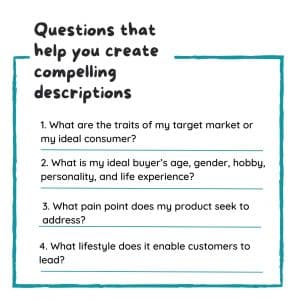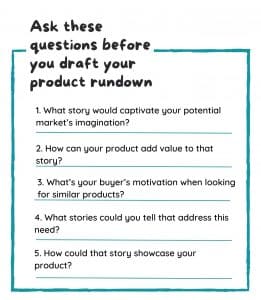How to Create Effective Product Descriptions That Sell

One effective way to lead the competition in today's market is to write attention-grabbing product descriptions.
Whether for SEO (search engine optimization) or SEM (search engine marketing) like Google Ads, a well-crafted product overview is a primary deciding factor on whether you’ll make a sale or lose money.
Compelling product descriptions don’t just inform shoppers. They also appeal to the consumers’ emotions, pique their curiosity, and drive the potential buyer to make an actual purchase.
This article will explore essential tips for creating product descriptions that actually sell.
Writing Product Descriptions That Drive Sales
Despite its potential to drive sales, many eCommerce site owners must pay more attention to product descriptions. You'll likely miss many sales opportunities if you write generic and robot-sounding product descriptions.
Consider this: Who would read long product details with too much technical jargon in today’s distracted age?
But don’t worry. Here are three sound principles to remember when crafting product features that sell:
Know Your Target Audience and Their Whys
Consumers buy for a reason.
Even when people claim to buy a product impulsively, they purchase things to satisfy a personal want or need. The buyer might have shopped to feel good or cope with stress. Whatever it is, there's always a why behind the buy.
Thus, it is important that you understand someone's needs, wants, or desires to persuade them to buy what you're selling them.
Knowing your audience will help you write compelling descriptions that sell.
For example, if you’re selling a solo stove, you might get the following information:
- The ideal customer comes from various age groups and genders but is likely a family-oriented young pro or middle-aged person or an individual who enjoys hosting social events.
- This buyer probably thinks a solo stove can help them host fantastic parties around a smokeless, beautiful fire.
In this case, crafting a buying persona, a semi-fictional representation of your potential buyer, is best.
There’s more to product description than writing claims like “this is a durable pair of shoes” or “it provides a pit for party hosts to make a fire.”
It’s all about your target audience’s “whys.” What feeling or experience do they want your product to give them? Also, what needs do they want it to meet?
If you can pinpoint precisely what your ideal customer wants and needs, you can paint a picture with words and make your product more appealing.
Here are some specific reasons people buy a product:
- Earn or save money
- Avoid the hassle
- Escape physical or mental pain
- Save time
- Become more comfortable
- Improve health
- Gain social approval
- Feel more loved
- Achieve popularity or higher social standing
Conduct market research if you don’t know what ticks your target audience. Read forums, post questions, and always ask for authentic customer feedback.
You can also email people requesting feedback and schedule a call with them. This high-value insight can be worth offering freebies or discounts.
Don’t Report, Relate
Great copywriters are experts in sustaining readers’ engagement, a necessary skill considering how people’s attention span has shrunk significantly, thanks to their increasing dependence on internet-based transactions.
One survey even showed that the average human's attention span is just 8.25 seconds — shorter than that of a goldfish.
You want your customers to engage with your product feature? Aim to make them feel involved in your story or objective.
As you might expect, people avoid pushy, irrelevant ads that only want them to spend more money. No wonder many consumers today use ad-blockers.
You want to hold your readers' attention; your product descriptions are no exception. However, this task can be challenging when you're marketing specific products. For example, it isn't easy to think of an engaging story for something as simple as paper towels or a charging cable. But that doesn’t mean you can’t do it.
Suppose you’re writing a product detail for a Star Wars-themed face mask. In that case, instead of saying outright, “This face mask will make you feel like you’re in Star Wars,” you could tell a story as if you’re in Star Wars already—before you even purchase the product.
If possible, combine humor with storytelling to create a compelling product description.
Of course, you can’t create a story around every product (much less humorous ones). However, if you can find a relatable angle for your products, it can help you establish a selling point.
Remember SEO
To get customers to come back, you need to optimize your product listings for keywords people search on Google and alternative search engines.
Optimizing your product descriptions requires knowing what keyword you want your product page to rank for, so you must research keywords. Use tools like Semrush to look for terms that can help you improve the relevance of your product page to the main keyword.
You can use these keywords for your page headers and product detail. You can add them wherever it feels natural and appropriate without stuffing them in too many times.
Conclusion
Customers are the ones who will ultimately decide whether or not to make a purchase, so keep them in mind when you're creating your product description.
It's important to understand your target audience and their needs, allowing you to create a description that resonates with them. Engage the reader by telling relatable stories that they can connect with. In addition, optimizing your description for SEO is essential so that potential customers can find your product. Avoid
writing generic and technical descriptions that may miss sales opportunities.
By following the tips outlined in this article, you can create attention-grabbing product descriptions that can help drive sales on your eCommerce site.





